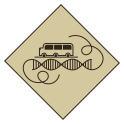ANNUAL REVIEW 2024


If you have any feedback about our new interactive report, or if you or your organisation would like support from Pawsey to help you reach new frontiers, get in touch!
NEW FRONTIERS

General / Administration
P +61 8 6436 8830
F +61 8 6436 8555
Pawsey Supercomputing
Research Centre
1 Bryce Avenue
Kensington WA 6151
Australia
Enquiries
Media Enquiries
P +61 8 6436 8920
pr@pawsey.org.au
Website by Purple. Artwork by Samara Ainge.
The Pawsey Supercomputing Research Centre is supported by the Australian Government through a $70 million grant made under the Industry Research and Development Act and administered by the Department of Industry, Innovation and Science. Pawsey is also supported by the Australian Government under the National Collaborative Research Infrastructure Strategy (NCRIS) through the Department of Education. The Centre would also like to acknowledge the support provided by the Western Australian Government and its Partner organisations.
We are grateful for the support of our core partners.







// Reimagine the world
to make a difference
COMPLEX
Unravelling problems
Our willingness to form close partnerships positions Pawsey to support high-impact science, but we also enable science at the human scale.
Thanks to our supercomputers, ordinary lives are improved, whether through data-driven medical interventions or engineering solutions too complex for an ordinary computer to solve.
Can a supercomputer build a better roundabout?
How do you design a better roundabout?
It’s not an easy question to answer.
With no traffic signals to control movement, roundabouts require drivers to make complex decisions as they interact with other vehicles and the complex geometry of roundabouts.
Take, for example, a driver deciding whether to enter a gap in the opposing traffic flow.
The driver needs to consider their current speed, ability to accelerate, the movements of other vehicles on the roundabout, as well as the size of the available gap.
All this information is processed intuitively by drivers before they decide whether to enter.
If the roundabout traffic is flowing well and cars are moving quickly, a driver might be less confident to enter a gap due to higher perceived risks.
But if the roundabout is busy, the traffic can slow down. Now, a driver might be more accepting of entering a small gap.
Waiting cars will move into spaces they might not have trusted at higher speeds and other drivers can be more willing to let them in.
Roundabout design, from the island diameter and curvature, to entry angles and deflection curves, can impact the factors that affect the decision-making process of drivers.
And getting this design wrong has real-world implications.
Not only are roundabouts expensive to build, but they are hard to adjust if they don’t work well.
If the roundabout is inefficient, it can increase driver frustration, lead to congestion, and negatively impact road safety.
Traffic experts try to understand these problems by observing driver behaviour but this is also challenging.
Manual traffic surveys are time consuming and prone to human error.
Even if video recordings are used, the measurement of quantities relevant to the complex interactions between vehicles is often too difficult for visual assessment by humans.
Researchers have also relied on statistical methods, but this approach requires large datasets, with time-consuming analyses, and researchers cannot observe traffic with the high fidelity required to understand the minutiae of driver behaviour.
Thanks to Pawsey’s compute power, though, Main Roads Western Australia and the Planning and Transport Research Centre (PATREC) can now apply artificial intelligence to the problem.
Engineers are capturing drone footage to analyse traffic flow at intersections and using computer vision with machine learning to extract spatiotemporal data from videos.
In what is thought to be the first dataset with this detail, each vehicle’s movement is automatically tracked to generate its trajectory, which can be used to analyse detailed vehicle interactions or aggregated traffic flow statistics.
Now researchers can swiftly count and classify vehicles on the road, analyse driver behaviour parameters such as critical gap, measure queue length and delays at intersections, and identify the speed of travel.
These advanced measurements that have been extracted with the help of AI techniques can be related to secondary data, such as the roundabout geometry, location, and seasonal factors in order to inform future design and planning.
With the power of Pawsey’s NIMBUS system, the new models can better identify and interpret driver behaviour at roundabouts and improve the way we move on our roads.
Explore our other frontiers
Only by pushing the boundaries of what's possible can we tackle the problems of the world.
From environmental sustainability and climate change to public health and food security, high-performance computing is on a mission to create a better world for all.
Our role is to connect the innovators to the infrastructure that can bring their theories to life.
Complex simulations that once took years can now be completed in a fraction of the time…
…leading to breakthroughs in climate modelling, energy transition, astrophysics and genomics.



// Reimagine the world to make a difference

COMPLEX

Website by Purple. Artwork by Samara Ainge.
If you have any feedback about our new interactive report, or if you or your organisation would like support from Pawsey to help you reach new frontiers, get in touch!
NEW FRONTIERS

General / Administration
P +61 8 6436 8830
F +61 8 6436 8555
Pawsey Supercomputing
Research Centre
1 Bryce Avenue
Kensington WA 6151
Australia
Enquiries
Media Enquiries
P +61 8 6436 8920
pr@pawsey.org.au
The Pawsey Supercomputing Research Centre is supported by the Australian Government through a $70 million grant made under the Industry Research and Development Act and administered by the Department of Industry, Innovation and Science. Pawsey is also supported by the Australian Government under the National Collaborative Research Infrastructure Strategy (NCRIS) through the Department of Education. The Centre would also like to acknowledge the support provided by the Western Australian Government and its Partner organisations.
We are grateful for the support of our core partners.
Explore our other frontiers





Unravelling problems
Our willingness to form close partnerships positions Pawsey to support high-impact science, but we also enable science at the human scale.
Thanks to our supercomputers, ordinary lives are improved, whether through data-driven medical interventions or engineering solutions too complex for an ordinary computer to solve.
Can a supercomputer build a better roundabout?
How do you design a better roundabout?
It’s not an easy question to answer.
With no traffic signals to control movement, roundabouts require drivers to make complex decisions as they interact with other vehicles and the complex geometry of roundabouts.
Take, for example, a driver deciding whether to enter a gap in the opposing traffic flow.
The driver needs to consider their current speed, ability to accelerate, the movements of other vehicles on the roundabout, as well as the size of the available gap.
All this information is processed intuitively by drivers before they decide whether to enter.
If the roundabout traffic is flowing well and cars are moving quickly, a driver might be less confident to enter a gap due to higher perceived risks.
But if the roundabout is busy, the traffic can slow down. Now, a driver might be more accepting of entering a small gap.
Waiting cars will move into spaces they might not have trusted at higher speeds and other drivers can be more willing to let them in.
Roundabout design, from the island diameter and curvature, to entry angles and deflection curves, can impact the factors that affect the decision-making process of drivers.
And getting this design wrong has real-world implications.
Not only are roundabouts expensive to build, but they are hard to adjust if they don’t work well.
If the roundabout is inefficient, it can increase driver frustration, lead to congestion, and negatively impact road safety.
Traffic experts try to understand these problems by observing driver behaviour but this is also challenging.
Manual traffic surveys are time consuming and prone to human error.
Even if video recordings are used, the measurement of quantities relevant to the complex interactions between vehicles is often too difficult for visual assessment by humans.
Researchers have also relied on statistical methods, but this approach requires large datasets, with time-consuming analyses, and researchers cannot observe traffic with the high fidelity required to understand the minutiae of driver behaviour.
Thanks to Pawsey’s compute power, though, Main Roads Western Australia and the Planning and Transport Research Centre (PATREC) can now apply artificial intelligence to the problem.
Engineers are capturing drone footage to analyse traffic flow at intersections and using computer vision with machine learning to extract spatiotemporal data from videos.
In what is thought to be the first dataset with this detail, each vehicle’s movement is automatically tracked to generate its trajectory, which can be used to analyse detailed vehicle interactions or aggregated traffic flow statistics.
Now researchers can swiftly count and classify vehicles on the road, analyse driver behaviour parameters such as critical gap, measure queue length and delays at intersections, and identify the speed of travel.
These advanced measurements that have been extracted with the help of AI techniques can be related to secondary data, such as the roundabout geometry, location, and seasonal factors in order to inform future design and planning.
With the power of Pawsey’s NIMBUS system, the new models can better identify and interpret driver behaviour at roundabouts and improve the way we move on our roads.
Only by pushing the boundaries of what's possible can we tackle the problems of the world.
From environmental sustainability and climate change to public health and food security, high-performance computing is on a mission to create a better world for all.
Our role is to connect the innovators to the infrastructure that can bring their theories to life.
Complex simulations that once took years can now be completed in a fraction of the time…
…leading to breakthroughs in climate modelling, energy transition, astrophysics and genomics.


